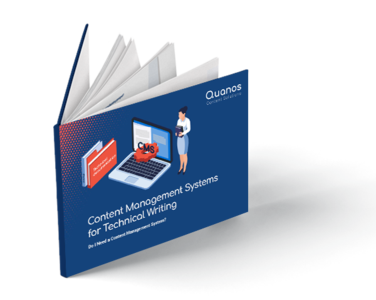Many technical writing departments ask themselves whether a content management system (CCMS) would be the right solution for them. The answer is not necessarily simple since many things can be achieved using Word, InDesign, or a self-made DITA solution. Here are five signs that a CCMS may be the right solution for you.

Writers from successful, export-oriented companies know that new markets mean even higher documentation costs. Every additional language not only means additional costs, but the level of complexity when handling and managing translations also increases exponentially. Eventually the point is reached at which the technical writing department only deals with the management of translation processes. Or at which something goes wrong...
A CCMS significantly reduces translation overheads, as the content in a CCMS is managed on a modular basis and re-used in various media and formats. This means that a translation is only required for those content modules (mostly short sections with a few sentences) that have changed since the last time a translation was produced. Furthermore, many content management systems have workflow components and interfaces to translation tools, which simplify the workflows significantly. And finally, a CCMS eliminates the need for a layout in the target language (more about this in Sign 3).
In the product range of many companies, products in a product line usually differ only by a few details: one model has a higher load capacity, the other only works in explosion-proof spaces, the third is aimed at private end consumers. In the automotive industry, this trend goes so far that customers can even configure their own cars.
With a content management system, you can also easily map these variants in the documentation. Because a CCMS uses modular content, this means that content modules can be used in different documents. Document variants are usually generated automatically using variables (e.g., for the product name) and metadata (e.g., to directly address target groups).
Every handbook has its own structure, every manual sounds different. The same processes are described in different ways, warnings look different in every chapter. To keep documentation consistent, a lot of effort is required. Yet this effort is just as necessary for marketing purposes as it is for legal reasons.
With a CCMS, you use standardized document structures and uniform text modules to ensure that the high quality of your manuals is maintained in the long run, even if different teams work are working on the texts. The customer receives a uniform user-experience which is just as high quality as your products.
Just as night follows day, newly written content is followed by a fine-tuning of the layout: a fact of life in every technical writing department. Tables must be uniform in design, the list items are displayed differently in the individual chapters, a DIN A5 version of the old manual is required. As soon as the content goes into translation, this layout work is required again for each language and costs a lot of money.
Content management systems keep the content separate from the layouts. This has several advantages: the technical writer does not have to think about the design while writing and the same content can be used for a wider variety of formats and media. Furthermore, every publication can automatically be assigned its own layout so that inconsistencies and typographical errors are eliminated.
There are many reasons not to distribute PDF manuals. A better search engine ranking, a legible display on mobile devices, or seamless integration into the user interfaces of machines are just a few of them.
With a CCMS, your content is media-independent. You pave the way for modern presentation options and your company's digitalization strategy. By the way, PDF also works with a CMS, of course.
Do any of these signs apply to you? Then it is probably time for a CCMS. If you don't think a content management system is for you as a technical writing team of one, we recommend this testimonial to you. And if you want to take a close look at whether a content management system is right for you, we are happy to assist you.

Our aim with this white paper is to share a few tips and things to watch out for that will help you with the concept phase when introducing an authoring environment and your ultimate choice of system. In other words, it seeks to answer the question: “When is a content management system the right solution for me and my technical writing department?”